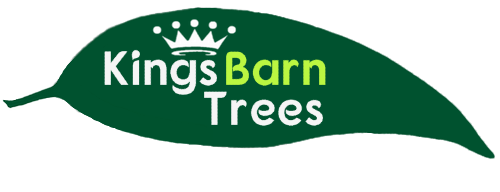Screening Guide
Screening Overview

This section is provided to assist in the design and implementation of various types of screening. There are many different forms of screening for many different purposes. These purposes include:
* Visual Screening - Hiding or obsuring a view you don't want to see
* Visual Screening - Hiding or obsuring something you don't want others to see
* Wind Screening - Protection from wind
* Noise Screening - Noise reduction
* Sun Screening - Providing shade
* Rain Screening - Providing shelter
These purposes are explained in more detail in the sections above - click on a title for more information. Not all the sections have been written; they will be added as they become available.
How to hide or obscure a view you don't want to see using a hedge or screening
The following guidelines may seem to some people to be very basic but we've explained the ideas from fundamental principles for those who don't have the benefit of experience.
There are two key aspects of hiding a view, what is it you are trying to hide and where are you trying to hide it from. You may be trying to hide a view from a particular location, i.e. from a kitchen window or the location could be quite wide, such as from within the garden. Equally the view you're trying to hide may be small, i.e a compost heap or large, such as a nearby factory unit.
So the place where you're observing from, may be from a single point or from a number of points and the object or view you're trying to hide may be small or large.
There are two key aspects of hiding a view, what is it you are trying to hide and where are you trying to hide it from. You may be trying to hide a view from a particular location, i.e. from a kitchen window or the location could be quite wide, such as from within the garden. Equally the view you're trying to hide may be small, i.e a compost heap or large, such as a nearby factory unit.
So the place where you're observing from, may be from a single point or from a number of points and the object or view you're trying to hide may be small or large.
Single Eye Point & Small Object
Single Observation Point - Small Object / View
In this case the screen will not have to be very wide and can be placed near the observation point or near the object it probably makes no difference to the size of the screen. In fact the narrowest screen will be one planted closest to which ever's the narrowest, the observation width or the object to be hidden.
In this case the screen will not have to be very wide and can be placed near the observation point or near the object it probably makes no difference to the size of the screen. In fact the narrowest screen will be one planted closest to which ever's the narrowest, the observation width or the object to be hidden.
Wide Eye Point Small Object
Wide Observation Point(s) - Small Object / View
Assuming that the width of the observation point(s) is wider than the object to be hidden, the width of the screen will be narrowest when planted nearer to the object.
Assuming that the width of the observation point(s) is wider than the object to be hidden, the width of the screen will be narrowest when planted nearer to the object.
Single Eye Point Wide Object
Single Observation Point - Wide Object / View
The width of the screen will be narrowest the closer it's planted to the observation point.
The width of the screen will be narrowest the closer it's planted to the observation point.
Wide Eye Point Wide Object
Wide Observation Point(s) - Wide Object / View
This can be a difficult situation but in general try to plant the screen closest to which ever's narrowest, the observation points or the object to be screened. For instance you may be able to see a large factory unit from any window in the house, in which case the narrowest screen would be one planted closest to the house.
This can be a difficult situation but in general try to plant the screen closest to which ever's narrowest, the observation points or the object to be screened. For instance you may be able to see a large factory unit from any window in the house, in which case the narrowest screen would be one planted closest to the house.
Determining Screen Height
Screen Height
A similar principle applies to the height of the screen. The lowest screen that'll do the job will be a screen that is planted closest to which ever's the smallest, the span of observation points or the object to be hidden.
A similar principle applies to the height of the screen. The lowest screen that'll do the job will be a screen that is planted closest to which ever's the smallest, the span of observation points or the object to be hidden.
Deciding Where To Plant the Screen
How to Decide Where to Plant
In all cases the best position for a screen may not be feasible or desireable. These are only guidelines to be used as a starting point in deciding where to plant the screen. Planting a screen 1 metre from your kitchen window may obscure a view but it'll cut out most of the light in the process.
It's therefore important to establish priorities and restrictions whilst maintaining a degree of balance when deciding what's best.
Example
Firstly, order priorities by importance, for example.
1. Must be far enough from the house so that the roots don't reach the foundations
2. Must not restrict access beside the house
3. Must not block the light
4. Must hide the neighbours shed from the lounge window
5. Must be as narrow as possible (fewest number of plants hence lowest cost)
In this case the hedge should be say 2.5 metres from the house so that the roots don't reach the foundations but it needs to be say 3 metres from the window so that it doesn't block out the light. The width of the hedge, 3 metres from the house would have to be say 2 metres wide to obscure the shed, whereas it would have to 4 metres wide if the hedge was placed at the boundary. Therefore the ideal place for the lowest cost hedge would be 3 metres from the house. However you may think this is still too close to the house for access and decide to plant the hedge 4 metres away despite the slightly higher cost.
In all cases the best position for a screen may not be feasible or desireable. These are only guidelines to be used as a starting point in deciding where to plant the screen. Planting a screen 1 metre from your kitchen window may obscure a view but it'll cut out most of the light in the process.
It's therefore important to establish priorities and restrictions whilst maintaining a degree of balance when deciding what's best.
Example
Firstly, order priorities by importance, for example.
1. Must be far enough from the house so that the roots don't reach the foundations
2. Must not restrict access beside the house
3. Must not block the light
4. Must hide the neighbours shed from the lounge window
5. Must be as narrow as possible (fewest number of plants hence lowest cost)
In this case the hedge should be say 2.5 metres from the house so that the roots don't reach the foundations but it needs to be say 3 metres from the window so that it doesn't block out the light. The width of the hedge, 3 metres from the house would have to be say 2 metres wide to obscure the shed, whereas it would have to 4 metres wide if the hedge was placed at the boundary. Therefore the ideal place for the lowest cost hedge would be 3 metres from the house. However you may think this is still too close to the house for access and decide to plant the hedge 4 metres away despite the slightly higher cost.
Visual Screening Hiding From Others Introduction
The starting point may seem obvious but you need to think clearly what it is you are trying to obscure and from what observation points. What you are trying to obscure may be small like a garden shed or it could be a large area such as a swimming pool. Where will 'it' be visible from, a neighbours kitchen window or from the bus that goes by? Is what you're trying to hide on top of a hill or in a valley? Is it being viewed from below, or above?
If possible, sketch a diagram to show the relative size of the object to be obscured, where it can be seen from and the distance between them.
If possible, sketch a diagram to show the relative size of the object to be obscured, where it can be seen from and the distance between them.



